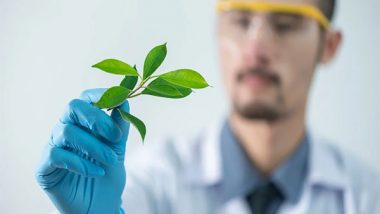Lower Saxony [Germany], July 17 (ANI): Oceanic islands can be used as models for ecology, biogeography, and evolutionary studies.
Many groundbreaking discoveries, including Darwin's theory of evolution, have resulted from the study of island species and their interactions with their living and non-living environments.
Also Read | Women's Ashes 2023: Nat Sciver-Brunt Just Didn't Get the Support She Needed, Says Lydia Greenway.
An international research team led by the University of Göttingen has now investigated the flora of Tenerife, a Canary Island. The results were unexpected: the island's plant life has a remarkable variety of forms. In terms of functionality, the plants differ little from mainland plants. However, unlike the mainland's flora, Tenerife's flora is dominated by slow-growing, woody shrubs with a "low-risk" life strategy. Nature published the findings.
The researchers investigated how the plants of Tenerife differ in functional terms from plants from other parts of the world. They conducted extensive field research and measurements at over 500 sites using the most up-to-date methods of functional ecology. The sites were scattered all over the island at altitudes ranging from sea level to mountainous regions above 3,300 metres.
Also Read | Greek Wildfires Near Athens Prompt Evacuations.
The scientists recorded about 80 per cent of Tenerife's native seed plants, and surveyed eight plant characteristics: plant size, specific wood density, leaf thickness, absolute and specific leaf area, leaf dry matter, nitrogen concentration in leaf tissue, and seed weight. They compared their data with data on more than 2,000 plant species found on the mainland.
"Our study shows, for the first time and contrary to all expectations, that species groups that evolved on the Canary Islands do not contribute to the expansion of the breadth of different traits. This means they do not lead to more functional diversity," explains the lead of the study, Professor Holger Kreft, and Göttingen University’s Biodiversity, Macroecology and Biogeography research group. Previous comparisons show that species occurring on islands can differ significantly from their relatives on the mainland."
"A well-known example is provided by the Galapagos giant tortoise: the species is only found on the Galapagos Islands and, as a result of adaptation to its environmental conditions, is much larger than tortoises from the mainland. The research team expected similar differences between island and mainland plants, but this was not the case.
"Rather, we see that most species follow the constraints of the island climate. Thus, medium-sized, woody species develop. These tend to live with the limited resources and high risks of extinction on the island. That is, they grow slowly. The high functional diversity is mainly due to the species that are widespread on the island and the nearby mainland," explains Kreft.
"At the beginning of our research, we assumed that island plants would show fundamental differences and would be characterised by rather limited diversity in terms of function due to their geographical isolation," explains first author Dr Paola Barajas Barbosa. The results are part of her doctoral thesis, which she did at the University of Göttingen. She now does research at the German Centre for Integrative Biodiversity Research in Leipzig (iDiv). "We were all the more surprised to find that the plants of Tenerife have a comparatively high functional diversity.” (ANI)
(This is an unedited and auto-generated story from Syndicated News feed, LatestLY Staff may not have modified or edited the content body)













 Quickly
Quickly
















